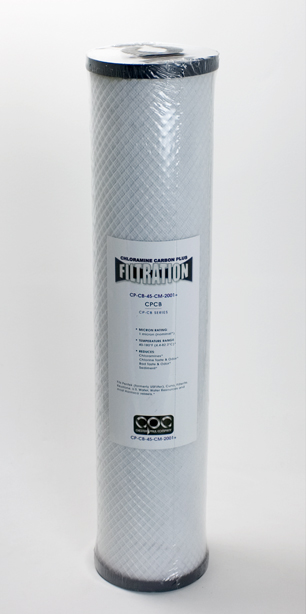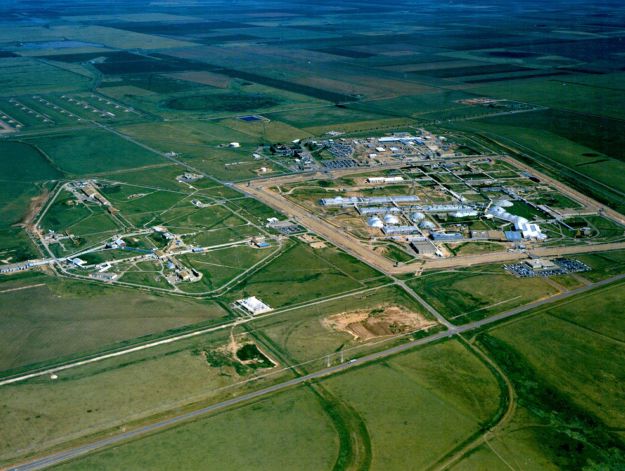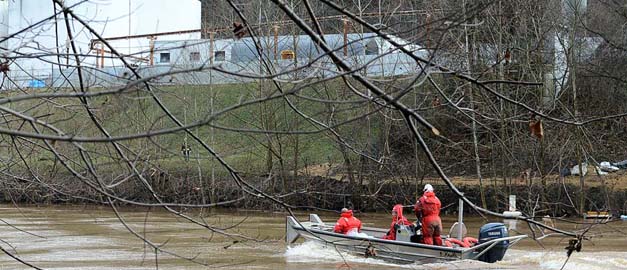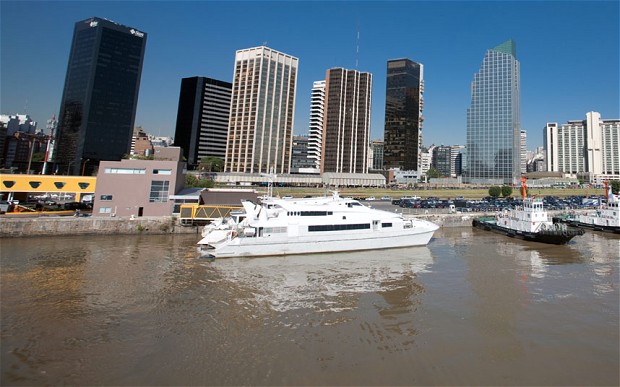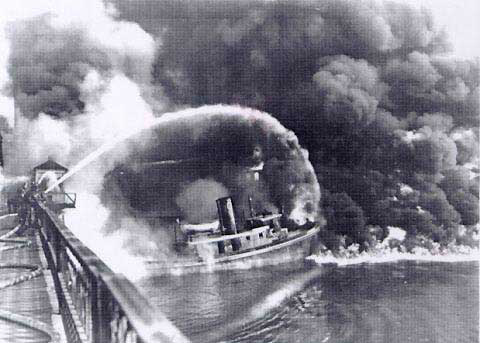
Republicans have implemented some of the most notable US environmental laws, even if one of the most successful, the Clean Water Act of 1972, was initially vetoed by Richard Nixon. At the time, two thirds of America’s rivers were considered polluted, with raw sewage pouring into many of them and Ohio’s Cuyahoga River famously catching fire.
Editor’s Note: One of the most significant and effective pieces of legislation ever enacted in the United States was the Clean Water Act of 1972. Americans today complain of the restrictive actions of the EPA, the organization created by the Act, and recent legislation has cut back on the agency’s authority, but the fact is that the Clean Water Act has performed miracles in the cleanup of America’s water.
It has been pointed out the the EPA is the victim of its own success. Because most have forgotten how bad things were prior to the Clean Water Act, we complain of excessive regulation which is blamed for holding businesses back. At the time of the enactment, public support was so strong in support of federal enforcement of water protection that a bipartisan Congress easily over-rode President Nixon’s veto of the Act. When you hear today’s politicians whining about over-regulation, ask yourself if you would really rather go back to the time when American rivers were receiving untreated sewerage and chemical wastes from 2/3 of the nations cities and factories and rivers were actually catching fire.
Below is the transcript of an interview with Republican William Ruckelshaus, the first administrator of the Environmental Protection Agency and a long-time advocate for clean water. The interview is conducted by Ashley Ahearn. If you prefer, you can listed to the interview by using this link: stream/download . –Hardly Waite.
AHEARN: He was the first Administrator of the Environmental Protection Agency back when it was created under the Nixon administration. He’s had a long career in law, business and politics. And now he lives in Seattle, where I sat down with him in his office.
RUCKELSHAUS: Thanks for being here.
AHEARN: Take me back to the time of the creation of the Clean Water Act – what was the feeling at the time that made the EPA and made the Clean Water Act necessary?
RUCKELSHAUS: Well the sentiment was an explosion of public concern about the environment. It was caused by a number of factors, Rachel Carson’s book which was written in 1962, had a cumulative effect that was quite pronounced in the country at the time. We had flammable rivers, you already mentioned the Cuyahoga River in Cleveland.
We had people in Denver wanting to see the mountains and people in Los Angeles wanting to see one another and it was a terrible time. I remember the first time I moved to Washington and the air was brown as I’d go to work in the morning. There was no industry in Washington at the time, that was all automobile pollution. So, people not only heard and saw problems of pollution on television every night, they witnessed it on the way to work, so it really created a demand that something be done.
What people have forgotten is that the Clean Water Act was vetoed by President Nixon; that veto was overridden overwhelmingly in both houses of Congress by both parties, even though the election was just two weeks away, and President Nixon was just 20 points ahead of Senator McGovern, his opponent. At the time still, his own party overturned that veto overwhelmingly.
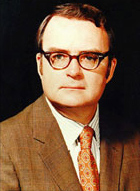
William Ruckelshaus
AHEARN: What was that like? What were your conversations like with Nixon?
RUCKELSHAUS: Oh, they were so wonderful.
AHEARN: (Laughs.)
RUCKELSHAUS: I had sent him a letter prior to his decision as to whether to sign or veto the bill spelling out why I thought he should sign it, why I was in support of it. His principal concern was that he had asked for five billion dollars to devote to the sewage treatment plant grant program at the federal level. And they’d put seven billion in the bill and that got him quite agitated – he thought that was too much money. So he vetoed it. And what the override of that veto really showed was the overwhelming public support that existed at that time for cleaning up the water and the air and handling all kinds of environmental problems.
AHEARN: I want to play some tape for you that might sound familiar – it’s from the NBC evening news archives from 1971:
[ARCHIVE TAPE: William Ruckelshaus, President Nixon’s head man on environment was on the stand today before Senator Muskie of Maine who has dwelled on this issue himself. They were taking about clean water. How long is it going to take? I’m going to have to acquire some kind of national deadlines in order to ensure there’s no inequality of treatment of this between regions – the states just don’t respond with equal speed. I think that’s right. Each industry and the states must be placed on a deadline. And it’s through this method that we can get uniform treatment across the country of putting everybody on the same deadline.]
AHEARN: That guy sounds familiar.
RUCKELSHAUS: He doesn’t sound familiar to me!
AHEARN: (Laughs).
RUCKELSHAUS: Muskie did.
AHEARN: That deadline you were talking about ended up being 1985. There was supposed to be “zero discharge of pollutants into navigable waters by 1985” is the quote. And, quote, “swimmable, fishable waterways by 1983.” Looking back on it, was that a reasonable deadline?
RUCKELSHAUS: No. It was not. Not anymore than the 1975 deadline for clean air throughout the country was reasonable. The Congress believed that setting deadlines, even if they were somewhat arbitrary and not likely to be achieved was necessary both to demonstrate the urgency of the need for the problem to be addressed, and at the same time maximize the pressure on the administrative branch to get moving to show improvement.
I can remember testifying in front of Senator Muskie that if we stopped doing everything that we were doing in the government we couldn’t achieve these deadlines. And the problem with them was not the sincerity with which they were being suggested by the Congress, the problem with it was you doomed an agency like EPA to failure before it starts because we can’t get there in that period of time.
It’s taken us hundreds of years to get where we are today in terms of pollution. You just simply can’t clean it up overnight. That was always capable of being portrayed as dragging your feet and not doing the right thing. In my view, it was just a statement of reality that we couldn’t do it in that period of time.
AHEARN: So, the Act passes, you’ve got this new power and the money to make the changes and build the infrastructure. What happens next, what’s going through your head?
RUCKELSHAUS: Well, it was a marvelous opportunity, in my view, to try to show the American people that their demand – their legitimate demand that something be done about a societal problem – would trigger the right kind of response from government and it was up to us at EPA to do the best job we could to respond to that legitimate concern, that was affecting public health and the environment.
We had less than a third of the cities in the countries providing adequate sewage treatment – in some cases, no sewage treatment. The sewage was just going directly into waterways and that was causing water borne diseases, it was causing all kinds of problems. We just had ignored it, essentially from the beginning, and this was a massive effort on the part of the federal government to deal with this problem.
AHEARN: What would have happened if we hadn’t had the Clean Water Act? What did it allow you to do?
RUCKELSHAUS: That’s a very good question. The way to measure progress is not just against where we were when we started versus where we are today, but where we were when we started and where we would be today had we done nothing. There are thousands of miles of waterways that are much cleaner today than they were 40 years ago as a result of the treatment being put in or discharges that were going in that have been corrected. And as I say, that doesn’t mean we’re home free, we’ve still go work to do and always will have. But we’re a lot better off today than we were 40 years ago.
AHEARN: What are you seeing now when you say there’s more work to do? What would be at the top of your list if you were in charge today?
RUCKELSHAUS: The biggest problem by far is what’s called non-point source pollution. The point sources are water discharged from sewage treatment plants or from major industrial facilities, and those were the things that got the most attention when we started because that was 85 percent of the problem. That’s what EPA estimated was true. The other kinds of problems are runoff from city streets, runoff from suburban lands, from farmlands, from rural lands, and those are so-called non-point source pollutions, it doesn’t all come from one single source. And the situation is just reversed today.
The EPA’s current estimates is that 85 percent of the problem is non-point source pollution. That’s a much harder problem to get at because it isn’t a single plant or a single city that’s discharging. You can put those cities, which we’ve done, and industrial facilities on permits. Permits spell out what they have to do to keep the water from being polluted from their discharge. They have self-reporting requirements if they violate any of the terms of the permit they can either be fined substantially or be put in jail if they violate on purpose the requirements of the permit itself.
So that problem is largely under social control. I’m not saying that it’s gone, we still have to stay with it, but it’s largely under social control. The non-point source problem is all of the rest of us. That’s the ones that we’re all convinced we’re not doing any of this – this is all some terrible person or all some terrible industry or city that I have no control over. But getting people to manage their land in such a way, getting people to control their lives in such a way that they don’t contribute to this non-point source pollution problem is proving to be very difficult.
AHEARN: I want to talk politics here for a minute. It seems like in recent years, Congress has had a really hard time reaching any sort of bipartisan agreement on anything, really. Let alone environmental issues. But 40 years ago, when the Clean Water Act came into being, things looked different. Why is the environment a partisan issue now, and how do Republicans get back into the game of protecting the environment?
William Ruckelshaus was the first administrator of the EPA. (Wiki Creative Commons)
RUCKELSHAUS: Well, they’re not. Those Republicans in the House, in particular, though it’s probably true in the Senate as well, but the ones in the House have passed a lot of laws recently through the House, but not through the Senate, that would take authority away from EPA to regulate this kind of stuff, that would even abolish EPA in the case of some of those laws… are a result of people coming to believe that the regulatory system itself is imposing unfair burdens on industry, on the American people. So that when a Republican politician rails against the EPA for excessive regulation, they don’t get the same kind of feedback they would have gotten 40 years ago when these laws passed unanimously by their predecessors in Congress.
And when they asked EPA why are you doing what you’re doing, because the very body I’m testifying in front of told me to do this 40 years ago, it’s still in the law, you haven’t amended the law. If you don’t want me to enforce the law, then don’t put it in the law that I’m charged with implementing. And I’ve seen the current Congress say that any regulation that costs over 100 million dollars a year, we should review as to whether or not it should go out in the form in which it’s been promulgated.
Well, I’m going to be tempted to give them that authority and you go ahead and answer the questions from your constituents about the impact of doing this on their health, on their environment, and see how much you like making these kinds of decisions. They wouldn’t last six months under those conditions. Now, it will never happen, they’ll never get that kind of authority to go back, but the difference today from where we were 40 years ago is where public opinion is. If public opinion were as intolerant of what’s happening to our environment and our public health today as they were 40 years ago, you wouldn’t have a partisan split on this issue. There was almost unanimity that something be done about it.
AHEARN: So, what changed?
RUCKELSHAUS: I think a number of things changed. Maybe the most important thing is success. The EPA may well be a victim of its own success. We don’t see the same kinds of visible pollution problems today that we did. We don’t have flammable rivers anymore and we don’t have smog that’s so awful that you can’t even see one another. That was the situation back in the ’60s when the public’s concern began to express itself.
We still have problems today; they tend to be more invisible. They tend to be things that you can’t smell, touch and feel the way you could 40 years ago. And that just doesn’t get public attention. You’re also going through a terrible economic time right now. And the economy, whenever the economy deteriorates, support for the environment deteriorates as well.
AHEARN: You’re a grandfather, right?
RUCKELSHAUS: Right. 12 times!
AHEARN: Wow! So, if you…
RUCKELSHAUS: That’s part of the problem.
AHEARN: (Laughs.) So if you listen to this interview with your grandkids, or if your grandkids heard this interview, what would you want to tell them about the Clean Water Act and what it meant for you and your career?
RUCKELSHAUS: Well, what I’d want them to know is that their society, their government, can be responsive in a democracy to their legitimate demands. And that where problems are identified and the government is supported by the public and serious about dealing with them, significant progress can be made. So the government isn’t always the enemy, the government is sometimes a necessary institution for dealing with problems as widespread and gross as water pollution was, and it’s an example of our country having successfully grappled with a problem.
So, don’t, as you grow older and as you mature in your understanding of the choices that we have in society, necessarily rule out a governmental solution for a problem that you have. It’s not the best way to solve all of the problems by any means, but there are some problems that we’re in it together, just like our President has said. Some problems you can solve yourself, others you have to solve together – water pollution is right up there at the top.
AHEARN: Mr. Ruckelshaus, thanks for joining me.
RUCKELSHAUS: Sure Enough. Thank you.
AHEARN: Bill Ruckelshaus was the first Administrator of the Environmental Protection Agency back when it was created under the Nixon Administration.
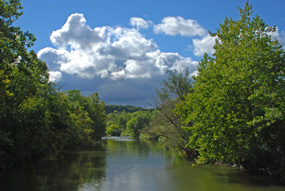
The Cuyahoga River Today
Reference Source: Living on Earth.
See also on this site, Cuyahoga River Fire by Michael Rotman.
Pure Water Gazette Fair Use Statement




